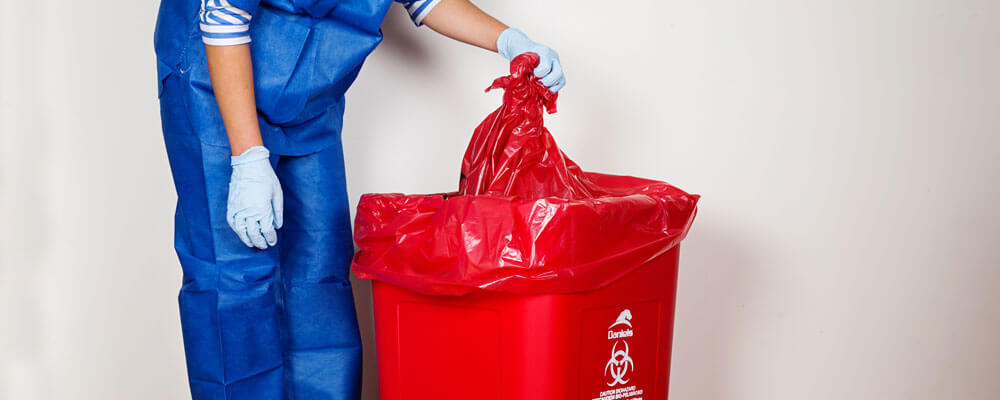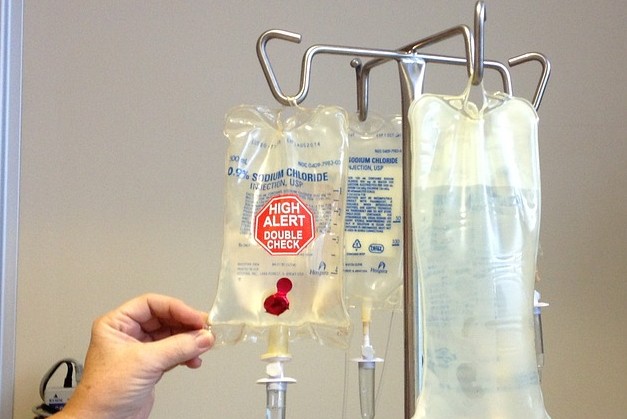Guardians of Tidiness: Resident Medical Waste Removal Service for Your Comfort
Remain Ahead of Rules: Expert Guidance on Medical Garbage Disposal
In a world where the healthcare sector is regularly progressing, it is imperative for clinical centers to stay in advance of regulations when it comes to the correct disposal of clinical waste. From recognizing the different categories of medical waste to implementing the ideal collection and partition methods, this conversation will provide beneficial understandings and workable tips to help centers stay in advance of guidelines in the ever-changing landscape of medical waste disposal.
Comprehending Medical Waste Categories
Recognizing medical waste groups is necessary for proper disposal and administration in medical care facilities. Clinical waste describes any type of waste created by healthcare tasks that may position a hazard to public health and wellness or the setting. It is crucial to classify clinical waste precisely to ensure its risk-free handling, disposal, transportation, and treatment.
There are several groups of medical waste that health care centers require to be accustomed to. The most usual categories include contagious waste, pathological waste, sharps waste, pharmaceutical waste, and chemical waste. Each group has specific guidelines and guidelines for its correct management and disposal.
Contagious waste consists of products polluted with blood or various other bodily liquids, such as handwear covers, gowns, and lab cultures. Pathological waste describes human tissues, organs, or body components that call for special delivery and disposal. Sharps waste consists of used needles, syringes, and various other sharp items that can create injury and transfer infections. Drug waste consists of expired, extra, or contaminated drugs that require mindful handling and disposal. Last but not least, chemical waste includes solvents, disinfectants, and other chemical substances utilized in health care facilities.
Remaining Up-To-Date With Regulatory Modifications
Staying current with regulatory changes is important for health care facilities to guarantee compliance and proper management of clinical garbage disposal. medical waste removal services. With policies continuously developing, it is vital for health care facilities to stay up-to-date to prevent charges, penalties, and possible injury to the environment and public health and wellness
To remain ahead of regulative modifications, healthcare facilities need to establish a system for monitoring and monitoring updates. This can be done by registering for regulative newsletters, participating in meetings and workshops, and proactively getting involved in industry organizations. Furthermore, facilities need to assign a staff participant or team in charge of staying informed and sharing info to appropriate stakeholders.
Regular interaction with governing companies is also crucial. Healthcare facilities need to establish connections with neighborhood, state, and federal firms to ensure they understand any kind of modifications in guidelines that may affect their waste monitoring practices. This can be done with normal meetings, involvement in public remark periods, and positive involvement with regulative agencies.
Additionally, health care facilities must take into consideration partnering with waste monitoring firms that concentrate on medical garbage disposal (medical waste disposal services with WasteX). These business are often skilled in the current regulations and can offer support and assistance to make certain compliance
Executing Appropriate Collection and Segregation Approaches
To properly manage medical waste disposal, healthcare facilities should develop correct collection and partition approaches according to regulative guidelines. Applying these approaches guarantees the secure handling and disposal of potentially hazardous materials, safeguards the setting, and minimizes the risk of injuries and infections to healthcare employees and the basic public.
Appropriate collection and partition methods include making use of marked containers and identifying systems. Medical care facilities must provide plainly labeled containers for different kinds of medical waste, such as sharps, transmittable waste, pharmaceutical waste, and non-hazardous waste. These containers should be color-coded and clearly marked to stay clear of complication and advertise simple identification.
Additionally, healthcare facilities ought to educate their team on the right procedures for collecting and segregating clinical waste. This includes educating them on the various sorts of waste, the proper containers to utilize, and the significance of following regulations and guidelines. Routine training sessions and refresher course programs ought to be conducted to ensure that staff members continue to be current on ideal methods.
Additionally, healthcare centers need to establish a system for routine collection and disposal of clinical waste. This might involve partnering with qualified waste administration firms that focus on clinical waste disposal. These firms will make sure that the collected waste is transferred and disposed of in compliance with governing requirements.
Selecting the Right Disposal Approaches

Incineration is just one of the most common and effective techniques for getting rid of particular sorts of clinical waste, such as pathological waste and sharps. It entails the regulated burning of waste at heats, lowering it to ash. However, incineration can release hazardous contaminants into the air and add to air pollution.

Chemical therapy entails the use of chemicals to counteract the waste and sanitize. Microwave treatment utilizes microwave energy to heat and decontaminate the waste.
Making Certain Compliance Through Documentation and Training
After very carefully considering the appropriate disposal techniques for clinical waste, health care facilities should more information make certain conformity with laws and minimize environmental impact by implementing effective documentation and training procedures. This step is crucial in maintaining a lasting and secure atmosphere for both health care workers and the public.

Health care workers that take care of clinical waste needs to get suitable training on waste segregation, managing, and disposal treatments. By providing detailed training, medical care facilities can encourage their staff to make enlightened decisions and decrease the danger of incorrect waste disposal.
Conclusion
To conclude, remaining in advance of laws in medical garbage disposal is important for health care facilities. medical waste removal. Understanding the various groups of clinical waste, staying upgraded with governing changes, applying appropriate collection and segregation methods, selecting the proper disposal methods, and making certain compliance through documents helpful site and training are all vital actions. By adhering to these guidelines, healthcare organizations can effectively get rid of and manage of medical waste in a responsible and safe manner
From understanding the different classifications of medical waste to executing the best collection and partition approaches, this conversation will certainly supply actionable ideas and valuable insights to assist facilities remain ahead of policies in the ever-changing landscape of clinical waste disposal. - medical waste disposal services with WasteX
The most typical classifications consist of contagious waste, pathological waste, sharps waste, pharmaceutical waste, and chemical waste. Healthcare centers need to give plainly labeled containers for various kinds of medical waste, such as sharps, infectious waste, pharmaceutical waste, and non-hazardous waste. Health care facilities need to develop an extensive system to videotape and track all elements of clinical waste disposal, including kinds of waste created, quantities, and disposal methods used. Health care workers that manage medical waste must obtain appropriate training on waste segregation, dealing with, and disposal treatments.